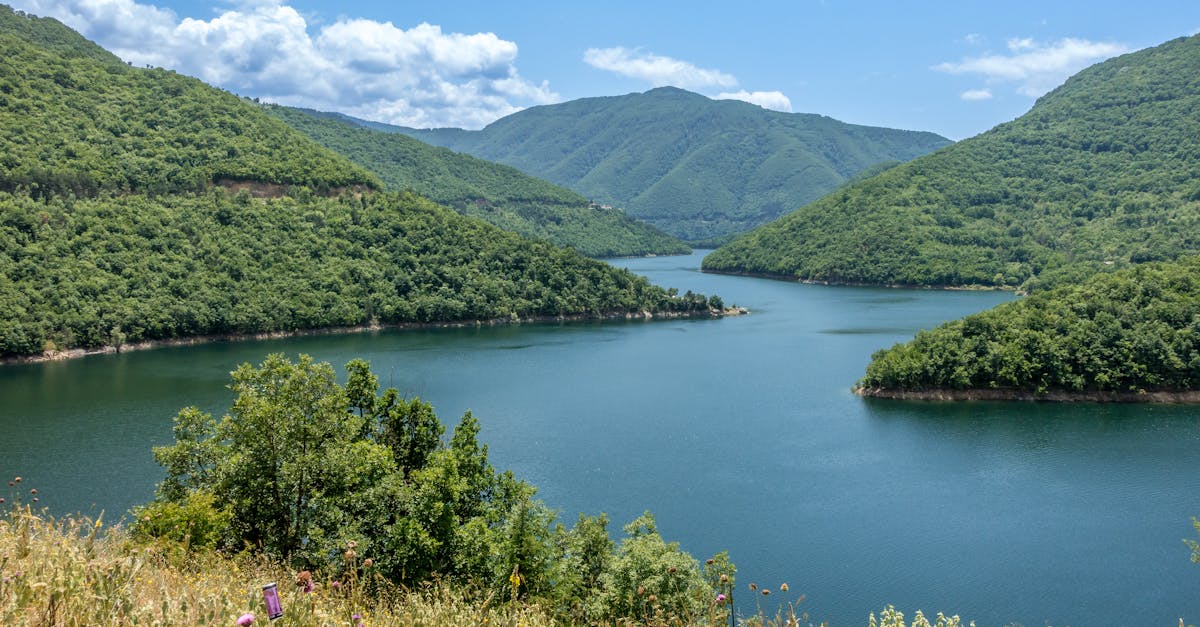KATRIN
- The Karlsruhe Tritium Neutrino (KATRIN) Experiment in Germany aims to measure the absolute mass of neutrinos. Why: Neutrinos are fundamental, elusive particles, and their exact mass is a crucial unknown in particle physics, impacting our understanding of the universe.
- KATRIN works by precisely analyzing the energy spectrum of electrons emitted during the radioactive decay of tritium. Why: The shape of this spectrum, particularly near its maximum energy, is directly influenced by the neutrino’s mass.
- The experiment recently set a new upper limit on the sum of the masses of the three neutrino types (8.8 x 10^-7 times the electron mass). Why: This provides the most stringent, model-independent constraint on neutrino mass from direct measurement to date, improving previous limits by a factor of two.
- Measuring neutrino mass is significant because it challenges the Standard Model of particle physics. Why: The Standard Model predicts neutrinos are massless, but experimental observations of neutrino oscillations prove they have mass, suggesting the existence of new physics beyond the current framework.
- The experiment requires a massive, sensitive spectrometer (200-tonne). Why: Detecting the tiny effect of neutrino mass on electron energies requires an extremely precise and large-scale instrument, highlighting the difficulty of the measurement.
- KATRIN’s result is considered robust compared to limits derived from cosmology or other decay experiments. Why: It is a direct measurement of mass that does not rely on cosmological assumptions or assumptions about the neutrino being its own antiparticle.
Ocean Treaty 2025 Conf
- India is actively moving towards ratifying the High Seas Treaty (BBNJ Agreement), confirming its commitment contrary to any suggestion of reluctance.
- At the 2025 UN Ocean Conference, India reaffirmed its commitment to the treaty and proposed a six-point action plan focusing on science-based, inclusive, and sustainable ocean governance.
- India’s commitments include enhancing marine research, expanding marine protected areas, tackling marine pollution, promoting climate resilience, supporting renewable ocean energy, and integrating indigenous knowledge.
- India also endorsed the ‘Nice Ocean Action Plan’, emphasizing actionable steps for SDG-14 (Life Below Water).
- The High Seas Treaty aims to conserve and sustainably use marine biodiversity in areas beyond national jurisdiction (high seas).
- Key features of the treaty include establishing Marine Protected Areas, ensuring fair sharing of Marine Genetic Resources, mandating Environmental Impact Assessments, and supporting capacity building.
- The treaty needs 60 ratifications to come into force; as of mid-2025, 49 countries have ratified it.
- The treaty fills a major legal gap in international maritime law (UNCLOS) and is critical for protecting the “global commons” against threats like overfishing and climate change.

Empowering Women in Ag
- Why in News: The United Nations General Assembly declared 2026 as the International Year of the Woman Farmer, recognising their critical yet often overlooked role and the need to address their challenges. This declaration, supported by over 100 countries, brings global attention to the topic. Discussions like the WFP/Royal Norwegian Embassy symposia further highlight ongoing efforts and challenges.
- Significant Role: Women contribute nearly half of the global food supply, making up 60-80% of food production in developing countries and a large part of the agricultural labour force globally (39% in South Asia) and in India (around 80% rural women, feminisation of agriculture due to male migration).
- Major Challenges: Despite high participation, women face significant gender inequality in land ownership (only 14% nationally, 8.3% NFHS-5), limiting access to credit, technology, and services. They also struggle with limited access to education, skills, and financial literacy, an overburdened/unrecognised workload, market exclusion, and increased vulnerability to climate change.
- Indian Initiatives: India has implemented programs like MKSP & SMAM (skill enhancement, machinery subsidies), NFSM (30% budget allocation), ENACT project (tech-based advisories), promoting resilient crops/market linkages, SHGs/Microfinance, Lakhpati Didi, Namo Drone Didi, and specific allocations in irrigation/farming schemes to support women farmers. Rashtriya Mahila Kisan Diwas also celebrates their contributions.
- Steps for Empowerment: Leveraging the 2026 declaration is crucial. Policymaking needs to be gender-focused, based on disaggregated data. Enhancing women’s access to resources (credit, tech, info) and supporting collective action through SHGs are key to increasing their decision-making power and resilience.
- Overall Importance: Strengthening women’s role is vital not just for gender equality but also for ensuring food security, fostering rural prosperity, and building climate resilience, requiring rights-based and inclusive policies.
WPA 1972 Amendment Call
- Kerala has requested the Union Government to amend the Wildlife (Protection) Act, 1972 (WPA) to allow controlled killing of wild animals that pose a threat to human life or agriculture.
- Why: Human-wildlife conflict has intensified in Kerala, resulting in significant casualties (919 killed, 8,967 injured between 2016 and 2025) and forcing farmers to abandon land due to crop raids by animals like wild boars and bonnet macaques.
- The current WPA is seen as having challenges that prevent timely action against dangerous animals.
- Why: Animals listed under Schedule I receive high protection, requiring lengthy approvals under Section 11 before lethal measures can be considered, only after confirming capture/relocation isn’t feasible. Court orders also limit the ability of district collectors to act promptly. Wildlife wardens are restricted from taking proactive action against Schedule I animals like bonnet macaques.
- Kerala seeks flexibility to declare specific problem animals as vermin and simplify procedures for others.
- Why: The state wants an easier process to declare animals like wild boar as vermin under Section 62 due to population explosion and failed control measures. They also request removing bonnet macaque from Schedule I (where it was placed in 2022) to allow wardens to easily manage the species which causes significant agricultural damage.
Puducherry NeVA Launch
- National e-Vidhan Application (NeVA) platform was launched for Puducherry Legislative Assembly by Union Minister Dr. L. Murugan. Why: Marks a major step towards transparent, efficient, and environment-friendly governance.
- Puducherry is the 19th legislature to adopt NeVA, which is a workflow-based digital platform funded 100% by the Ministry of Parliamentary Affairs under the “One Nation, One Application” initiative. Why: To digitise legislative functioning and align with the vision of Digital India.
- The platform provides real-time access to legislative documents like bills, questions, and reports, enabling paperless operations. Why: Saves an estimated 3-5 tonnes of paper annually, supporting Go Green and Good Governance initiatives.
- NeVA is device-neutral, member-centric, and includes features like live-streaming and the mNeVA mobile app. Why: Enhances transparency, ensures 24×7 access to legislative data, and strengthens democracy by allowing public view of proceedings.
- It serves as a unified digital repository for legislative data across adopting states/UTs, hosted securely on NIC Cloud – MeghRaj. Why: Eliminates redundant systems and provides a consolidated digital resource.
State of World Population 2025
UNFPA’s State of World Population (SOWP) 2025 report, titled “The Real Fertility Crisis,” is in news for highlighting global demographic shifts, reaffirming India as the world’s most populous nation, and emphasizing unmet fertility goals and reproductive autonomy over fears of population decline.
- Most Populous Nation: India’s population estimated at 146.39 crore in April 2025, surpassing China, projected to peak around 170 crore in the early 2060s.
- Fertility Below Replacement Level: India’s Total Fertility Rate (TFR) has dropped to 1.9, below the replacement level of 2.1, though states show significant regional disparities (e.g., Bihar high, Kerala low).
- Youthful Demographics & Workforce: India benefits from a demographic dividend with 68% of the population in the working-age group (15-64) and a large youth cohort (26% aged 10-24).
- Barriers to Reproductive Choices: Millions are unable to realize their fertility goals due to challenges like financial, housing, and job insecurity (40%, 22%, 21% respectively), health issues (infertility, poor maternal care), social pressure, and rising anxiety.
- Focus on Reproductive Rights: The report urges India to prioritize reproductive rights, ensuring universal access to contraceptives, maternal/infertility care, and safe abortion, and addressing structural barriers and gender inequality.
- Demographic Statistics: Key data points include a median age of 28.2 years, 77.7% overall literacy (15+), 41.7% female labor force participation (15+), and a dependency ratio of 47%.
- Vulnerabilities: Highlights that over 80% of India’s population lives in climate-vulnerable areas, and significant percentages suffer from non-communicable diseases and mental health issues.
- Life Expectancy: Projected at 71 years for men and 74 years for women.
Sudan Refugee Crisis
- Sudanese refugees are increasingly fleeing Egypt towards Libya and Europe.
- Why: Egypt tightened refugee policies with stricter visas, costly residency, and government-controlled registration, leading to detentions and fear for asylum seekers.
- Libya is now a major, dangerous transit route.
- Why: Instability, abuse, extortion, violence, and detentions by militias and smugglers make the journey perilous.
- The humanitarian response is overwhelmed, facing severe shortages.
- Why: Rising refugee numbers exceed available aid and funding.
- Egypt’s actions are criticized for potentially violating international obligations.
- Why: Policies causing displacement raise concerns, including potential European complicity through funding border control.
- The root cause is Sudan’s civil war (since April 2023).
- Why: Conflict between SAF and RSF caused mass displacement, violence, and state collapse, forcing millions to flee Sudan initially, many to neighboring Egypt.
Green Nickel
- New Extraction Method: A hydrogen plasma-based method is a breakthrough for nickel extraction from low-grade laterite ores.
- Why: It replaces carbon, drastically cutting CO₂ emissions by 84% and improving energy efficiency by 18%, moving towards “green metallurgy.”
- Addressing High Emissions: Traditional nickel production is highly carbon-intensive (>20 tonnes of CO₂ per tonne of nickel).
- Why: This offsets the environmental benefits of clean tech like EVs that rely heavily on nickel, shifting the pollution burden. The new method offers a cleaner alternative.
- Essential for Clean Tech: Nickel is critical for rechargeable batteries (especially in EVs) and demand is surging (>6 million tonnes/year by 2040).
- Why: Sustainable production methods like this are vital to meet future demand without exacerbating climate change.
- Utilizing Abundant Ores: The method works efficiently on laterite ores, which are abundant globally (like in Odisha, India) but difficult to process with conventional methods.
- Why: This opens up new sources of nickel, reducing reliance on depleting sulphide ores and maximising the use of domestic resources.
- Potential for India: India has significant laterite reserves (Sukinda Valley, Odisha) but relies on imports for primary nickel.
- Why: This technology could enable domestic production from currently underutilised reserves, aligning with industrial growth and net-zero goals by reducing import dependency and carbon footprint.
- Simplified Process: It is a one-step process using hydrogen plasma in an electric arc furnace, yielding water as a byproduct.
- Why: This bypasses the multi-step, energy-intensive traditional methods (calcination, smelting, reduction, refining), saving energy and time while being carbon-free.
- Enabling Sustainable Future: Without such innovations, the shift to green technologies risks relying on carbon-intensive material sourcing.
- Why: This method is crucial for ensuring that the materials underpinning the green revolution are produced sustainably, truly reducing overall environmental impact.
Velpur Model: Child Labour
- World Day Against Child Labour (June 12): Observed by ILO to draw attention to the persistent issue and mobilize action against it globally.
- Scale of Problem: 160 million children globally are in child labour; over 4.3 million in India (Census 2011), mainly in agriculture, domestic work, and informal sectors. Why: Highlights the vastness and urgency of the problem.
- Causes: Driven by poverty, family debt, lack of quality education access, social acceptance of child work, and weak law enforcement. Why: These are the root factors requiring systemic solutions.
- Impact: Deprives children of education/skills, leads to physical/psychological harm, and perpetuates intergenerational poverty. Why: Severe consequences for children’s development and future.
- Legal Framework: Indian Constitution (Arts 21A & 24) and Child Labour Act (1986/2016) prohibit child labour and ensure right to education. Why: Provides the legal basis to protect children.
- Government Initiatives: Include NCLP (special schools for rescued children), PENCIL portal (online tracking/monitoring), RTE Act (free education 6-14), and schemes like Mid-Day Meals to keep children in school. Why: Multi-pronged efforts to remove children from work and retain them in education.
- Challenges: Difficulties include hidden nature of child labour, inadequate rehabilitation, economic pressures on families, social tolerance, and weak coordination among agencies. Why: Explain why eradication remains complex despite laws and schemes.
- Velpur Model (Telangana): A successful, community-led initiative in Velpur Mandal declared child labour-free in 2001 and sustained for over two decades. Why: Demonstrates that complete eradication is achievable through local action and community ownership.
- Velpur Approach: Involved identifying/enrolling every child, using bridge schools, public awareness campaigns, persuading employers to write off parent debts (often linked to child labour), and formal commitments from local leaders (Sarpanchs) and government. Why: Shows the practical steps combining community pressure, education, and local governance support that made it work.
- Recognition: The model has been recognized nationally and internationally (ILO, President Kalam, NHRC) and is incorporated into training modules. Why: Validates its effectiveness and potential for replication in other areas.
- Way Forward: Emphasizes strengthening universal education, providing family livelihood support, improving inter-departmental coordination, and replicating successful community-driven models like Velpur. Why: Points to comprehensive strategies for sustainable eradication.
Sir C. Sankaran Nair
- Resigned from Viceroy’s Executive Council: Why? In protest against the Jallianwala Bagh massacre (1919), showing his principled dissent against British atrocities despite holding a high office.
- First Malayali President of Indian National Congress (1897): Why? Highlights his early prominence and leadership role in the nationalist movement.
- Jurist and Judge of Madras High Court: Why? Known for landmark judgments emphasizing due process, justice, legal integrity, and civil rights within the British system.
- Advocated Social Reform: Why? Promoted inter-caste marriage, women’s rights, and eradication of caste discrimination, demonstrating his commitment to social justice.
- Critic of Gandhi’s Methods: Why? Preferred constitutional and legislative paths over mass civil disobedience and the Khilafat Movement, showing his distinct approach to nationalism.
- Author of “Gandhi and Anarchy”: Why? Outlined his fundamental disagreements with dominant nationalist strategies, highlighting his independent critical stance.
- Underappreciated Figure: Why? Despite his significant contributions as a jurist, nationalist, and reformer, his legacy was largely sidelined in mainstream historical narratives until recently.
- Embodied Contradiction and Courage: Why? Was an insider in the British legal system yet a principled dissenter who challenged the empire, showing his complex role in the freedom struggle.
Emergency at 50
June 12, 1975: Allahabad High Court found Prime Minister Indira Gandhi guilty of electoral malpractice for misusing government resources in her 1971 campaign.
Justice Jagmohan Lal Sinha set aside her election to Lok Sabha and barred her from holding office for six years – the first time an Indian PM’s election was invalidated.
This judgment, stemming from Raj Narain’s petition, posed a severe threat to her political career and triggered a major constitutional crisis.
Facing growing protests and opposition, Indira Gandhi advised the President to declare a national Emergency on June 25, 1975, under Article 352.
The Emergency, lasting 21 months, suspended civil liberties, censored the press, led to arrests, and curtailed judicial independence, marking a period of authoritarian rule.
The 50th anniversary marks this pivotal legal event that directly led to the imposition of the Emergency, a significant period in India’s history.
The case highlighted the tension between political power and judicial review.
Etalin Hydro Project
- The Forest Advisory Committee (FAC) has granted in-principle forest clearance for the 3,097 MW Etalin Hydropower Project in Arunachal Pradesh. Why: This is the primary news development, signifying official progress for the long-proposed project.
- The project is located in the Dibang Valley, part of the Eastern Himalaya Global Biodiversity Hotspot, and involves dams on the Dri and Talo (Tangon) rivers. Why: Highlights its location in an environmentally sensitive area and the rivers it will impact.
- It is a Run-of-the-River project but requires felling approximately 270,000 trees and diverting over 1,100 hectares of forest land. Why: Details the significant environmental impact despite the project type.
- The region is rich in biodiversity, home to globally threatened mammal species and a large percentage of India’s bird species, making the deforestation a major concern. Why: Explains the ecological significance of the affected area.
- The project faces persistent opposition from the indigenous Idu Mishmi community. Why: Notes the local social resistance.
- This approval is significant because the same FAC had rejected the proposal in December 2022, citing biodiversity and wildlife concerns and demanding fresh studies. Why: This is the key controversy, showing a reversal of the previous decision.
- The recent approval relied on existing studies, including a Wildlife Institute of India study that was criticized by conservationists, overlooking the FAC’s earlier recommendations for more comprehensive, multi-seasonal assessments. Why: Explains how the approval was reached despite past concerns and criticized data.

Inflation Below 3%
- India’s CPI inflation dropped below 3% (estimated ~2.7%) in May 2025, the lowest level since April 2019 (2.99%).
- Why: Primarily driven by easing food prices, specifically falls in cereals and pulses, despite some increases in vegetable prices.
- Why: Favorable year-on-year base effect contributed to a price decline in essential commodities compared to the previous year.
- Why: Core inflation (excluding food and fuel) remained moderate (~4.2%) due to weak domestic demand and soft global commodity prices.
- This low inflation data allowed the RBI to cut interest rates significantly in 2025 (100 bps).
- The RBI revised its FY26 inflation forecast down to 3.7%, reflecting a benign outlook.
- Despite low headline inflation, the RBI shifted its policy stance from ‘accommodative’ to ‘neutral’.
- Potential risk: Prices of some vegetables like tomato and potato showed month-on-month increases in May, needing close monitoring.
CFRs End Naxalism
- Government aims to end Naxalism by March 2026, urging states to focus on infrastructure, rehabilitation, and operations.
- Naxalism stems from issues like land alienation, exploitation of forest resources, poverty, social exclusion, and lack of political voice for tribal communities.
- Community Forest Rights (CFRs) under FRA, 2006, recognize tribal communities’ traditional rights over forest resources and management.
- The Gadchiroli model uses CFR recognition combined with development and empowerment to counter Naxalism effectively.
- Why it works: CFRs address key Naxal causes by:
- Granting legal rights over traditional lands/forests, reducing alienation (a major cause).
- Providing exclusive rights over Minor Forest Produce (MFP), creating livelihood security and reducing poverty (economic driver for Naxal recruitment).
- Empowering Gram Sabhas (village councils) for resource management, ensuring democratic control and reducing political marginalization.
- Promoting sustainable resource management by the community itself.
- Gadchiroli achievements include the highest CFR recognition in India, significant community control over forests (5,110.07 sq km), improved livelihoods (₹7,000/month income from MFP), better forest conservation, and transparent, decentralized governance through Gram Sabhas.
- This approach fosters local ownership and economic upliftment, countering the narrative and conditions that fuel Naxal recruitment and activity.
- The model’s success in Gadchiroli suggests replication can reduce alienation and empower communities in other Naxal-affected areas, thereby tackling a root cause of the insurgency.



















